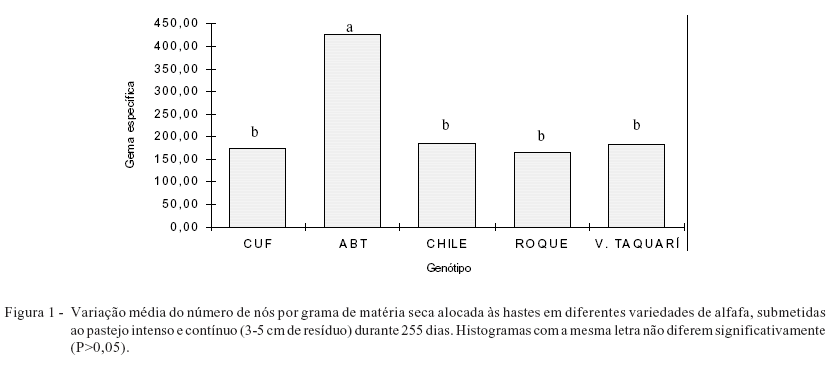The morphological characteristics of alfalfa plants associated to the grazing aptitude were evaluated in this trial. Three Crioula alfalfa populations originated from different regions without grazing history were evaluated: Chile, Roque Gonzales and Vale do Taquari, besides two North American cultivars, ABT 805, selected under grazing and CUF 101, selected under mowing. The trial was composed of plots with different materials, kept under grazing, where the grazing residue was constantly kept at 3-5 cm of height during a 255-day period under continuous stock. At the end of the experimental period, the plant survival percentage was calculated, which served as a parameter to stratify the genotypes in relation to the grazing adaptation level. ABR cultivar presented the highest survival percentage and CUF cultivar the smallest. Crioula populations Chile and Vale do Taquari had intermediate, while Roque Gonzales had survival rate similar to that of CUF cultivar. The morphological characterization results did not show differences in relation to the crown retractile growth, crown area, leaf area, specific leaf area, number of stems per plant and type of stem per plant (basilar or axial). Differences in relation to the stem/leaf ratio were observed for ABT cultivar, influenced by the smaller mass of stems per plant. The expression of the number of buds per carbon unit allocated to the stems was higher for ABT cultivar, becoming an efficient functional descriptor of the grazing aptitude, called as specific bud.
landrace germplasm; Medicago sativa; plant breeding; selection under grazing; specific bud



